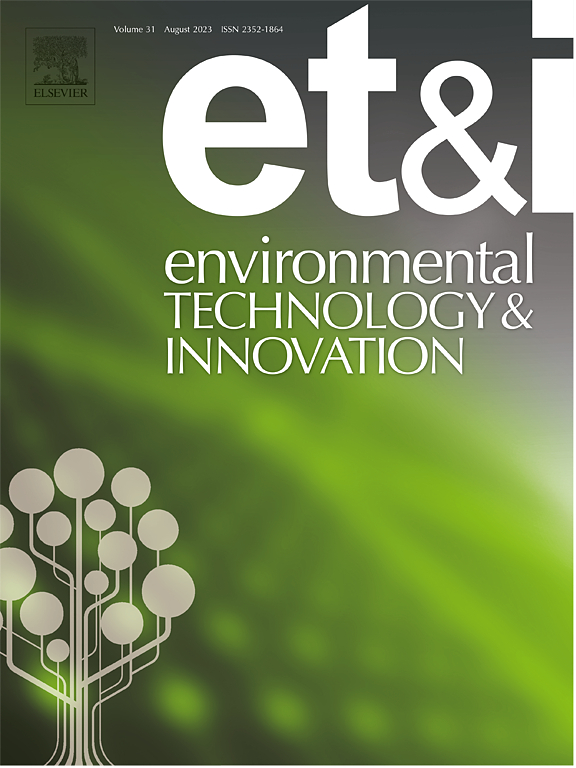Retention of per- and polyfluoroalkyl substances (PFAS) and influencing factors by conventional and modified constructed wetlands treating municipal wastewater effluent
IF 7.1
2区 环境科学与生态学
Q1 BIOTECHNOLOGY & APPLIED MICROBIOLOGY
引用次数: 0
Abstract
Per- and polyfluoroalkyl substances (PFAS) are a broadly applied group of fluorinated compounds that are characterised by extreme persistence and environmental toxicity. Conventional wastewater treatment plants (WWTPs) are designed to remove oxygen-depleting compounds, as well as nutrients, but lack the specific capabilities to effectively remove PFAS. Nature-based solutions are an established technology to further treat WWTP effluent and are gaining attention for the removal of PFAS. However, significant knowledge gaps remain regarding the ability of constructed wetlands (CWs) to remove PFAS and the mechanisms involved. This study investigated the occurrence of 11 PFAS in a conventional WWTP effluent and the efficacy of PFAS removal in a conventional vertical subsurface flow CW and four different CWs modified by biochar, granular activated carbon (GAC) and natural zeolite. The average concentration of the 11 selected PFAS in the WWTP effluent was 177 ± 83 ng/L, with the highest levels observed for 6:2-fluorotelomersulfonic acid (H4-PFOS) at 72 ± 46 ng/L and perfluorohexanoic acid (PFHxA) at 28 ± 7 ng/L. The results indicate that modified CWs that incorporate biochar, GAC, and natural zeolite are significantly more effective in removing bulk organics, nitrate, phosphate, and PFAS from municipal wastewater. While long-chain PFAS ≥ 8 C-atoms were partly retained in the conventional (5–59 %) and the zeolite-containing wetland (39–76 %), shorter PFAS exhibited negative removal. The combined adsorbent CW demonstrated the highest removal rates below the limit of quantification (LOQ) across all sampling campaigns due to synergistic effects of enhanced water retention, adsorption and ion exchange.
常规和改性人工湿地处理城市污水的全氟烷基和多氟烷基物质截留率及其影响因素
全氟烷基和多氟烷基物质(PFAS)是一类应用广泛的氟化化合物,其特点是具有极强的持久性和环境毒性。传统的污水处理厂(WWTPs)设计用于去除耗氧化合物以及营养物质,但缺乏有效去除PFAS的特定能力。基于自然的解决方案是一种成熟的技术,可以进一步处理污水处理厂的废水,并且在去除PFAS方面受到越来越多的关注。然而,关于人工湿地(CWs)去除PFAS的能力及其机制,仍然存在重大的知识空白。本研究考察了传统污水处理厂出水中11种PFAS的出现情况,以及传统垂直潜流连续污水法和四种经生物炭、颗粒活性炭(GAC)和天然沸石改性的不同连续污水法对PFAS的去除效果。11的平均浓度选择pfa的WWTP废水是177 ± 83 ng / L,最高水平的观察6:2-fluorotelomersulfonic酸(H4-PFOS)在72年 ± 46 ng / L和perfluorohexanoic酸(PFHxA) 28 ± 7 ng / L。结果表明,添加生物炭、GAC和天然沸石的改性化粪池在去除城市污水中的散装有机物、硝酸盐、磷酸盐和PFAS方面效果显著。长链PFAS≥ 8 c原子在常规湿地(5-59 %)和含沸石湿地(39-76 %)中部分保留,而短链PFAS表现出负去除。由于增强的保水、吸附和离子交换的协同作用,联合吸附剂CW在所有采样活动中表现出低于定量限制(LOQ)的最高去除率。
本文章由计算机程序翻译,如有差异,请以英文原文为准。
求助全文
约1分钟内获得全文
求助全文
来源期刊

Environmental Technology & Innovation
Environmental Science-General Environmental Science
CiteScore
14.00
自引率
4.20%
发文量
435
审稿时长
74 days
期刊介绍:
Environmental Technology & Innovation adopts a challenge-oriented approach to solutions by integrating natural sciences to promote a sustainable future. The journal aims to foster the creation and development of innovative products, technologies, and ideas that enhance the environment, with impacts across soil, air, water, and food in rural and urban areas.
As a platform for disseminating scientific evidence for environmental protection and sustainable development, the journal emphasizes fundamental science, methodologies, tools, techniques, and policy considerations. It emphasizes the importance of science and technology in environmental benefits, including smarter, cleaner technologies for environmental protection, more efficient resource processing methods, and the evidence supporting their effectiveness.
 求助内容:
求助内容: 应助结果提醒方式:
应助结果提醒方式:


